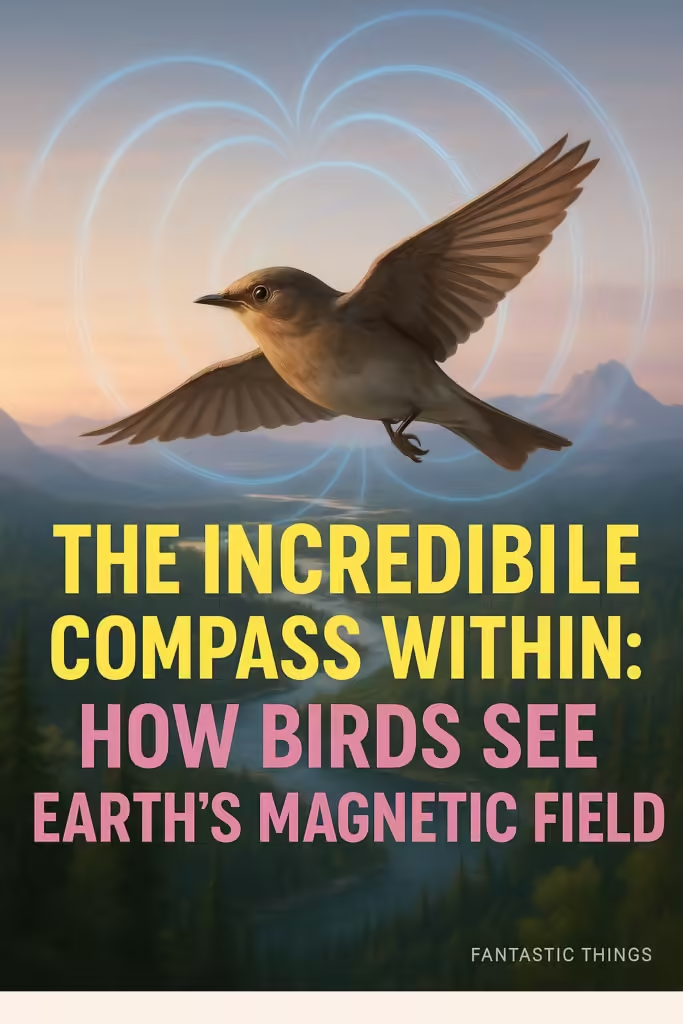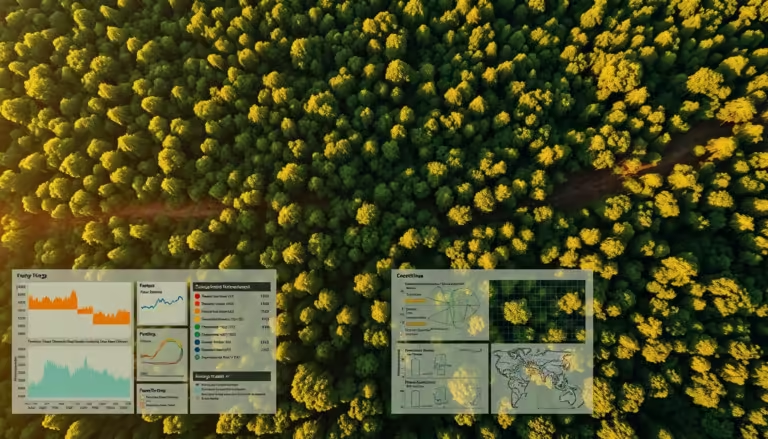
Birds, Quantum Entanglement, and the Mysterious Science of Migration
The Incredible Compass Within: How Birds See Earth’s Magnetic Field
Each year, countless birds embark on epic migratory journeys that span thousands of miles. Tiny warblers weighing no more than a few coins travel from the dense forests of North America to the tropical landscapes of Central and South America. Robins, swallows, and thrushes traverse continents, navigating through unfamiliar landscapes, across vast oceans, and sometimes even through the night. How do they do it? While humans rely on GPS systems, maps, and landmarks, birds possess a remarkable, built-in navigation tool—a biological compass known as magnetoreception.
What Is Magnetoreception?
Magnetoreception is the ability to detect the Earth’s magnetic field and use it for orientation and navigation. While the concept may sound like science fiction, it’s a very real and scientifically validated phenomenon. Birds like robins, warblers, pigeons, and even chickens have been shown to sense and respond to magnetic fields in experimental settings.
But what makes this sense so extraordinary isn’t just that birds can “feel” the magnetic field—it’s that they may actually be able to see it. Unlike humans, who can only navigate with external tools or environmental clues, migratory birds carry their navigation system within them—an internal GPS powered by evolutionary ingenuity.
The Science Behind the Sense
The key to this biological marvel lies in a special class of proteins called cryptochromes. These are light-sensitive molecules found in the eyes of birds, and they appear to play a crucial role in magnetoreception.
Cryptochromes are activated under specific wavelengths of light—particularly blue or green light found in natural daylight and twilight. When stimulated by light, these proteins undergo a reaction that produces pairs of entangled electrons. The spin of these electrons is subtly influenced by the Earth’s magnetic field, altering the chemical reaction in ways that researchers believe can be translated into visual patterns. In simpler terms, the bird may see the magnetic field as a kind of overlay on the natural world—lines, gradients, or shades that point toward magnetic north.
Imagine flying over unfamiliar terrain at night, with no landmarks and no stars visible due to cloud cover. While a human would be completely disoriented, a bird with magnetoreception may still “see” a visual map laid out in front of it—guiding its journey unerringly forward.
A Built-In GPS System
Studies suggest that birds integrate magnetic cues with other navigational aids, such as the position of the sun, star patterns, polarized light, and even olfactory signals. But magnetoreception stands out as the most reliable form of navigation when all else fails. Even in experiments where birds were placed in completely unfamiliar environments, they managed to reorient themselves correctly after disruptions—thanks to their internal compass.
What’s more astonishing is that this system works even in total darkness. Birds flying at night or during overcast days can still navigate efficiently across great distances. Unlike human-made GPS systems, which can falter without satellite coverage or battery power, the avian magnetic sense is both resilient and self-sustaining.
How Scientists Uncovered This Ability
The study of magnetoreception began in earnest in the mid-20th century, though observations of unusual animal navigation behaviors go back much further. Early experiments showed that migratory birds would orient themselves in particular directions even in enclosed, featureless environments—suggesting that they were using something other than visual landmarks.
In the 1970s and 1980s, researchers began experimenting with magnetic fields in laboratories. They discovered that manipulating the magnetic environment could alter the direction in which birds attempted to migrate. This was one of the first major clues pointing to the existence of magnetoreception.
The discovery of cryptochromes came later, revolutionizing the field. By genetically analyzing birds and altering their exposure to different light conditions, scientists linked magnetoreception to the proteins in their eyes. Today, advanced imaging, behavioral studies, and quantum physics models are all being employed to unlock the mysteries of this biological compass.
Not Just Birds: A Shared Superpower?
Interestingly, birds are not the only animals believed to possess this ability. Magnetoreception has also been observed in sea turtles, salmon, whales, bats, and even certain insects like monarch butterflies and fruit flies. Some studies even suggest that humans may have a very faint and largely dormant magnetic sense, though it’s nowhere near as refined as in birds.
This raises fascinating evolutionary questions. If such a mechanism exists across such diverse species, it likely evolved very early in the history of life. The Earth’s magnetic field has been present for billions of years, serving as a natural backdrop for evolution to harness.
Mysteries Yet to Be Solved
Despite decades of research, magnetoreception remains only partially understood. Scientists are still working to determine exactly how cryptochromes translate magnetic information into visual cues. Some hypotheses suggest that birds may perceive the field as a subtle shading across their vision, while others propose a dynamic overlay that changes as they shift their gaze.
There is also ongoing debate about whether magnetoreception is entirely based in the eyes, or if some birds may have magnetite-based sensors in their beaks or brain tissues. It’s possible that multiple systems are involved, working together to provide birds with comprehensive navigational data.
Moreover, the quantum nature of electron spin in cryptochrome reactions introduces a fascinating intersection of biology and physics. This could represent one of the few known examples of quantum effects in biological systems—a frontier area of research known as quantum biology.
A Sense We Can Only Imagine
To us, the Earth’s magnetic field is invisible, silent, and mostly irrelevant in daily life. But for birds, it’s a vital, ever-present guide woven into their very perception of the world. Imagine having a sense that overlays directional cues onto everything you see, helping you make long-distance travel decisions without hesitation. That’s the gift of magnetoreception.
Every time a robin returns to the same backyard from thousands of miles away, or a warbler stops precisely in the same forest patch year after year, it’s a testament to the incredible, often invisible forces guiding them. It’s not magic—it’s nature operating at its most elegant and efficient level.
As scientists continue to decode this biological GPS, one thing is clear: what we consider remarkable in the natural world often turns out to be just the tip of the iceberg. The humble migratory bird carries within it a marvel of evolutionary engineering—a compass, a map, and a vision beyond our own.



